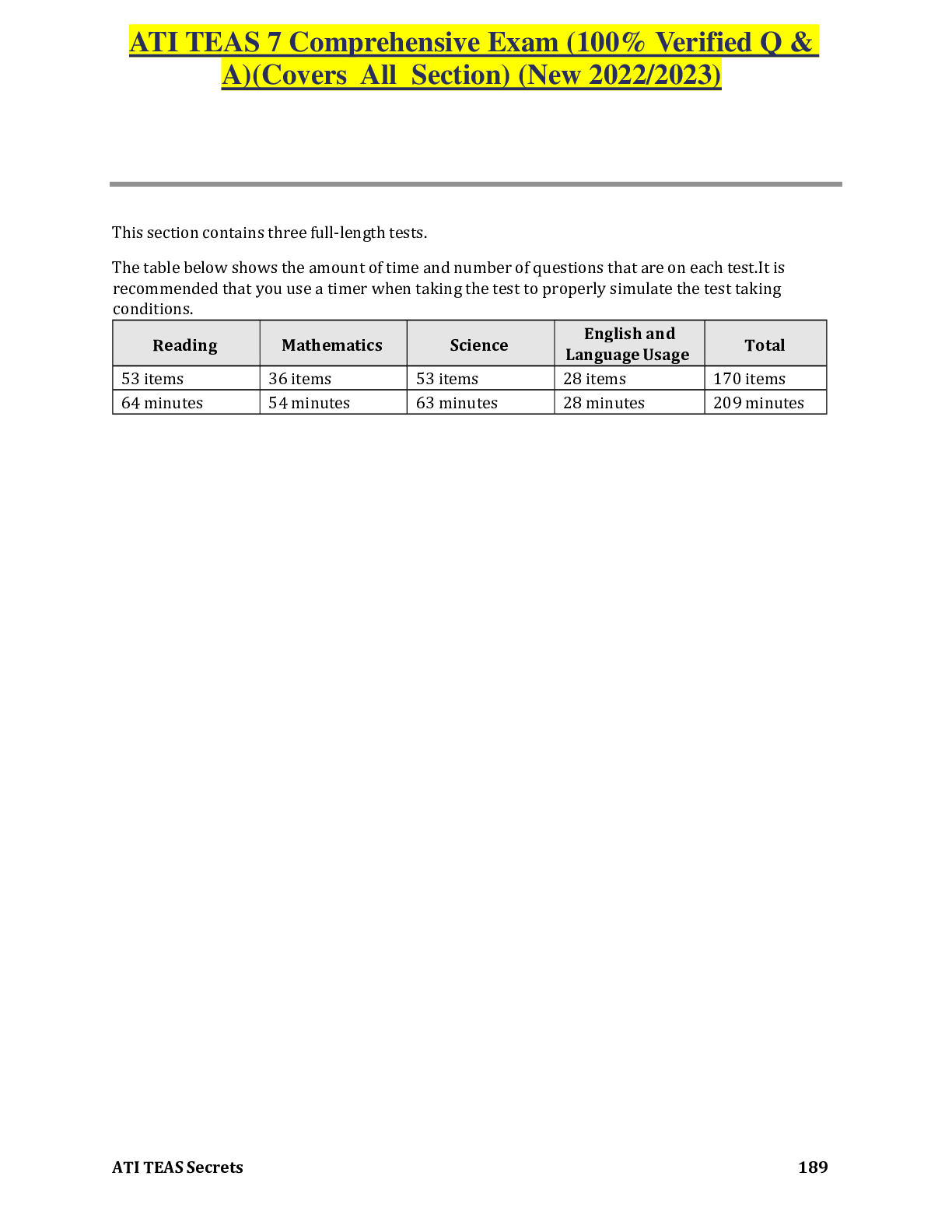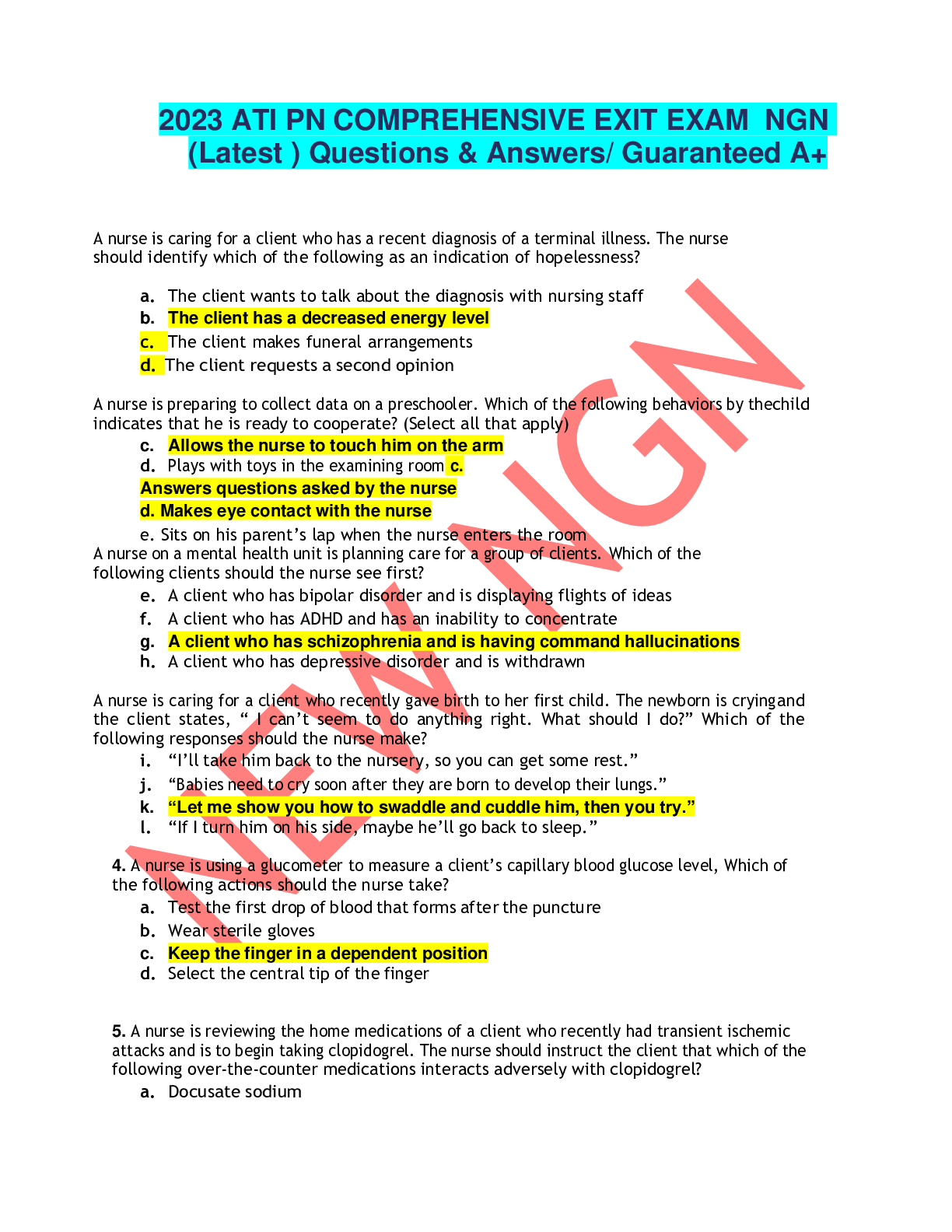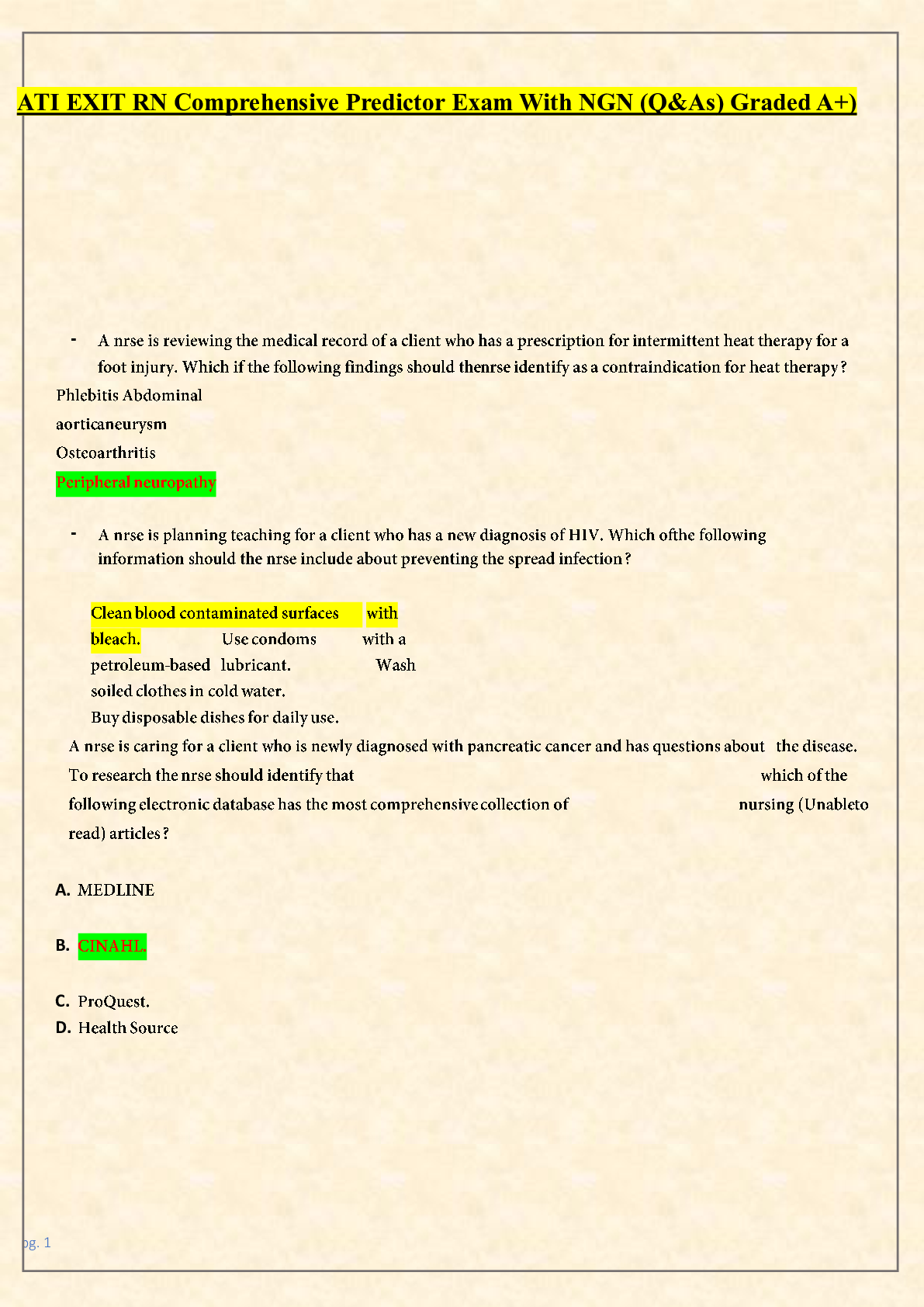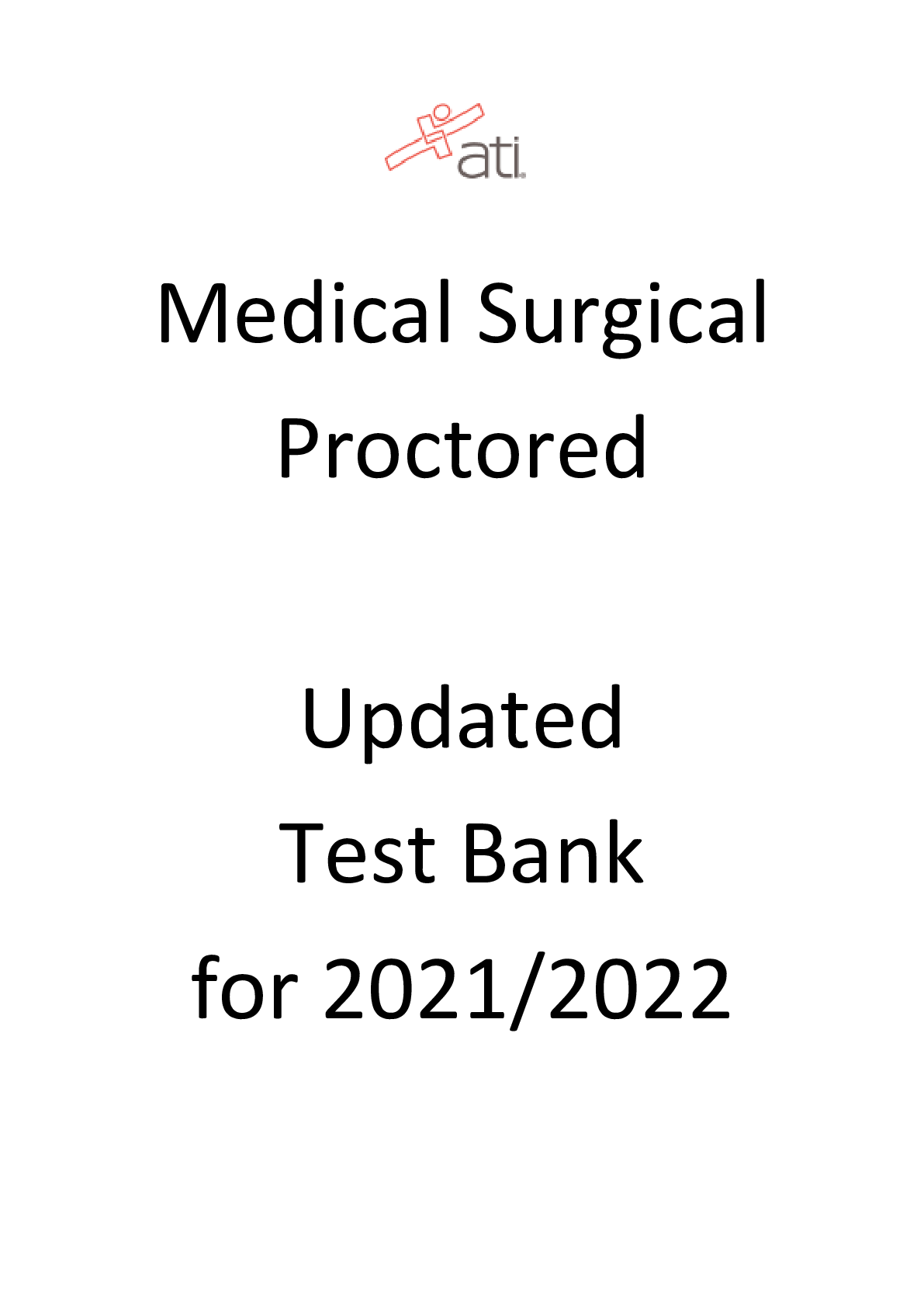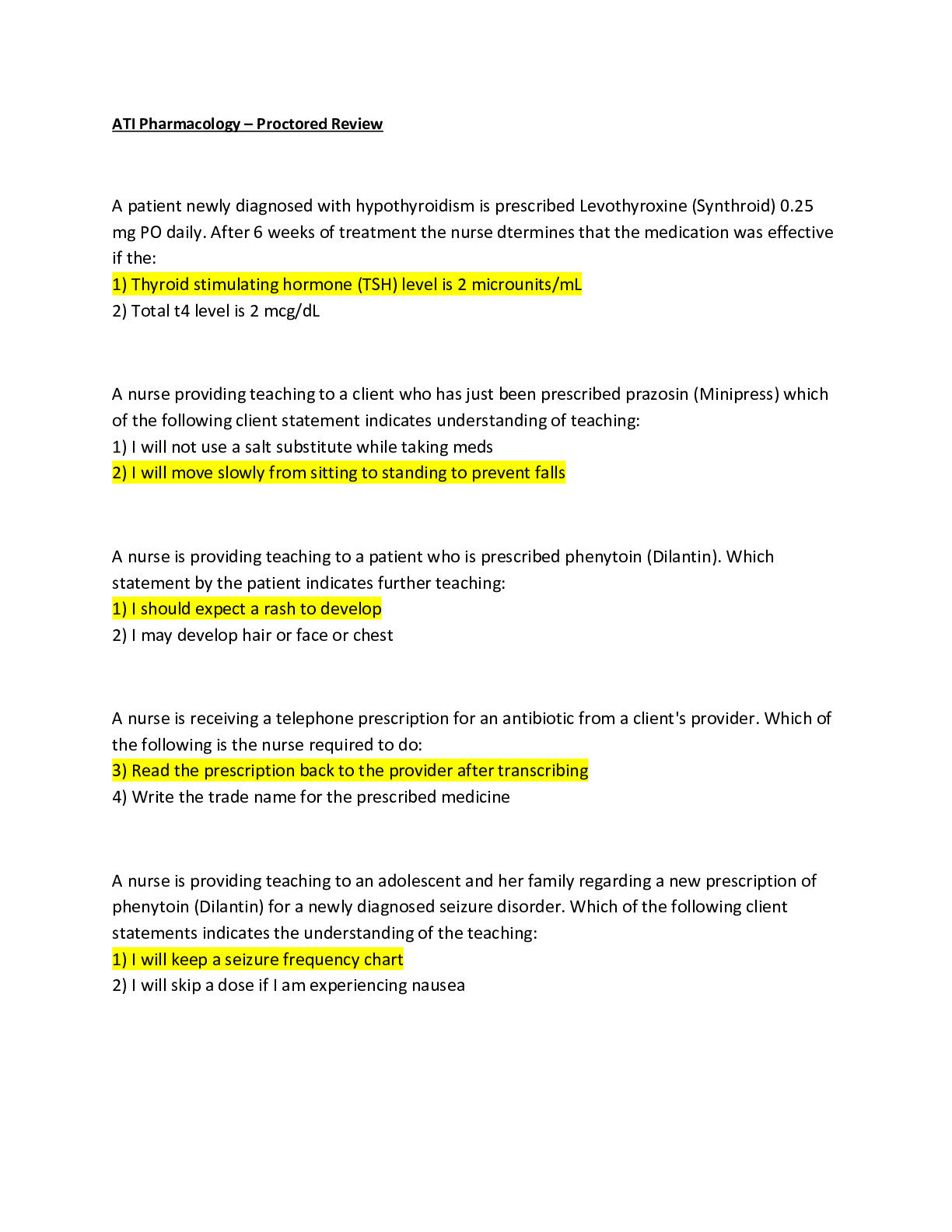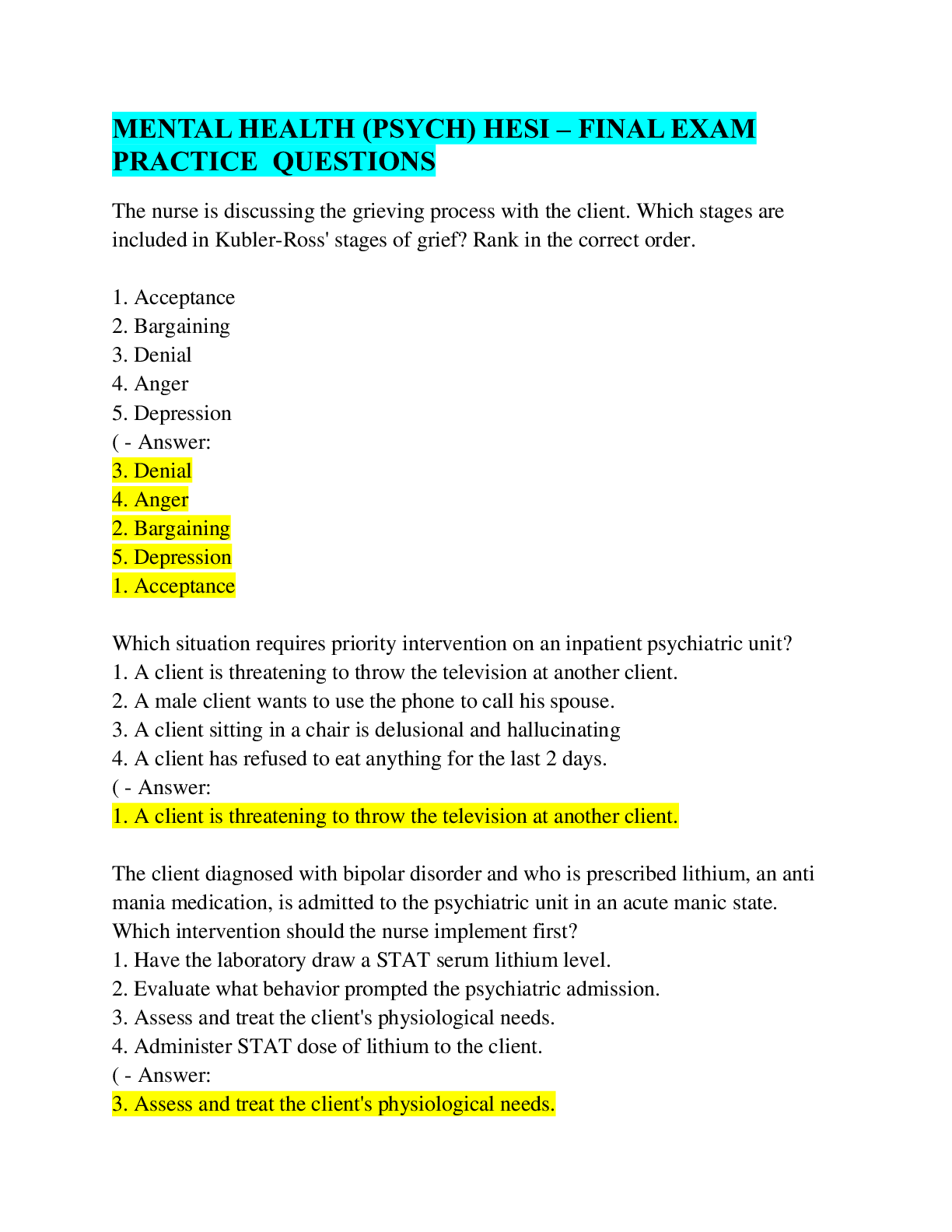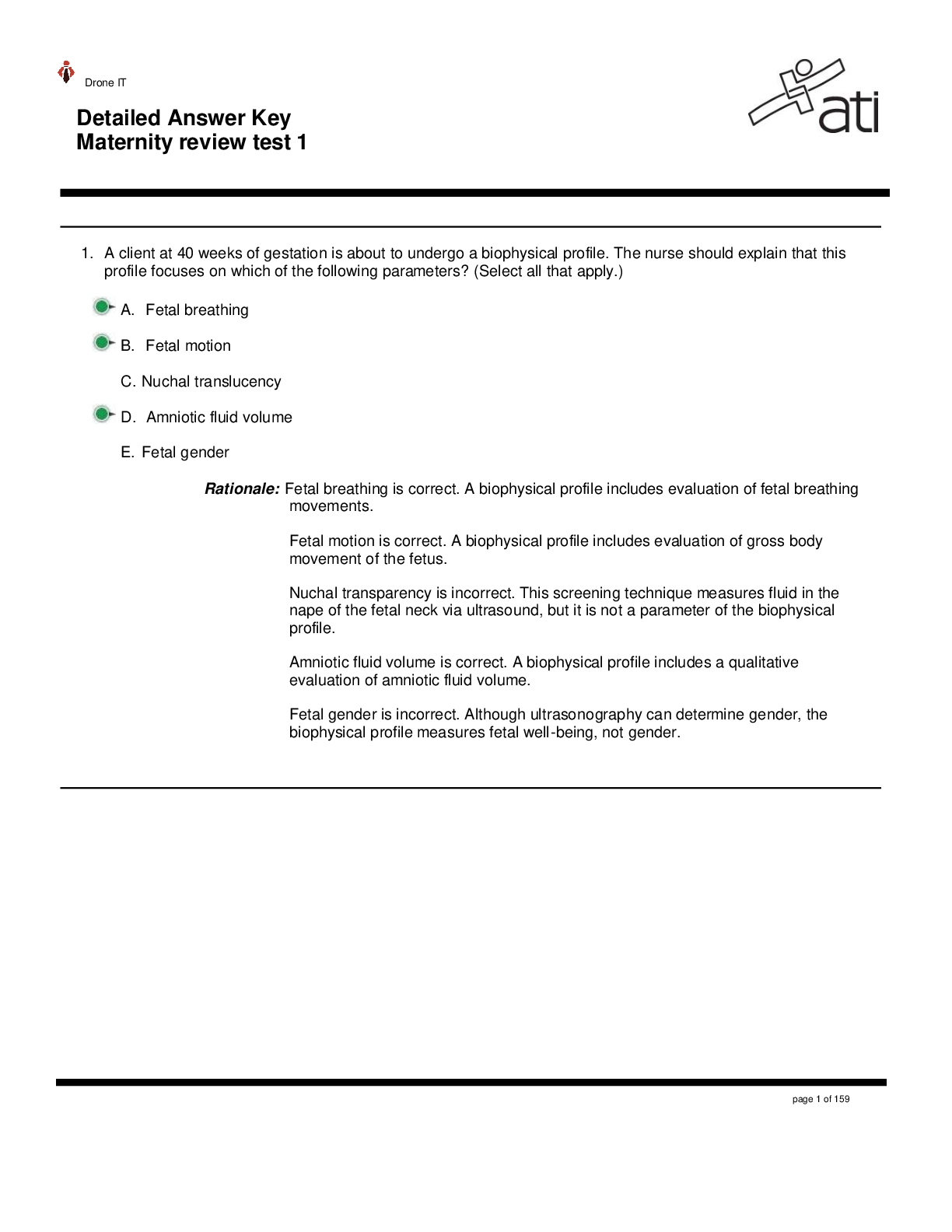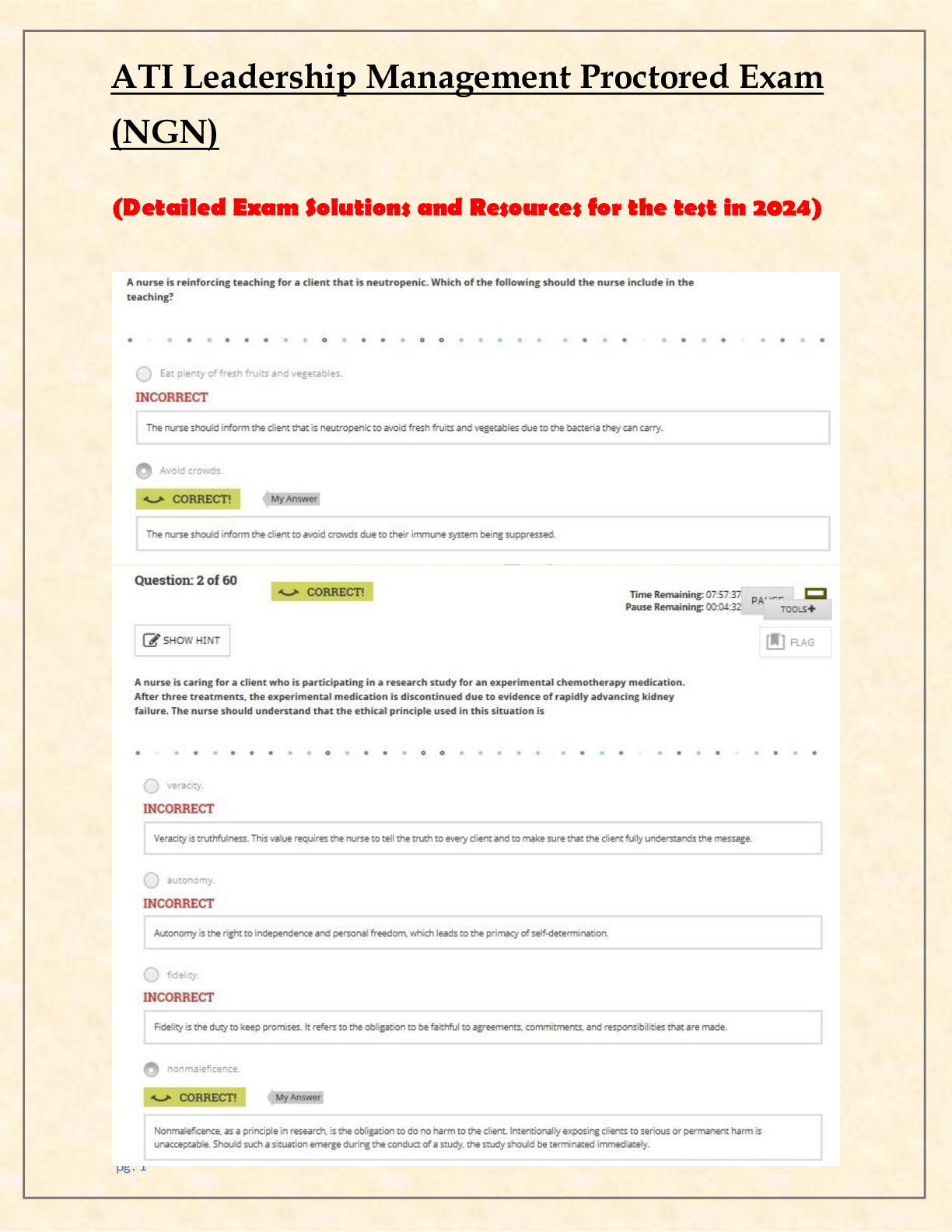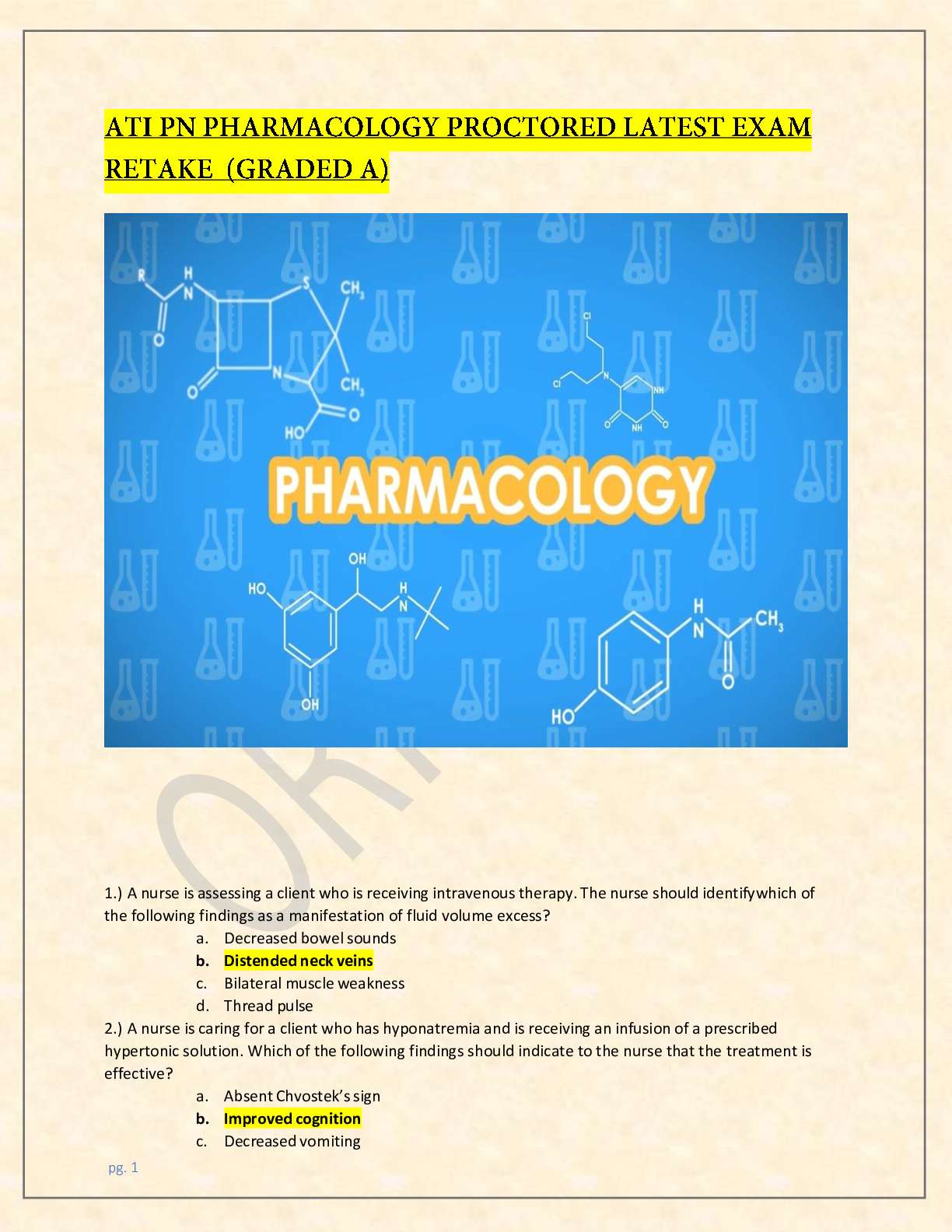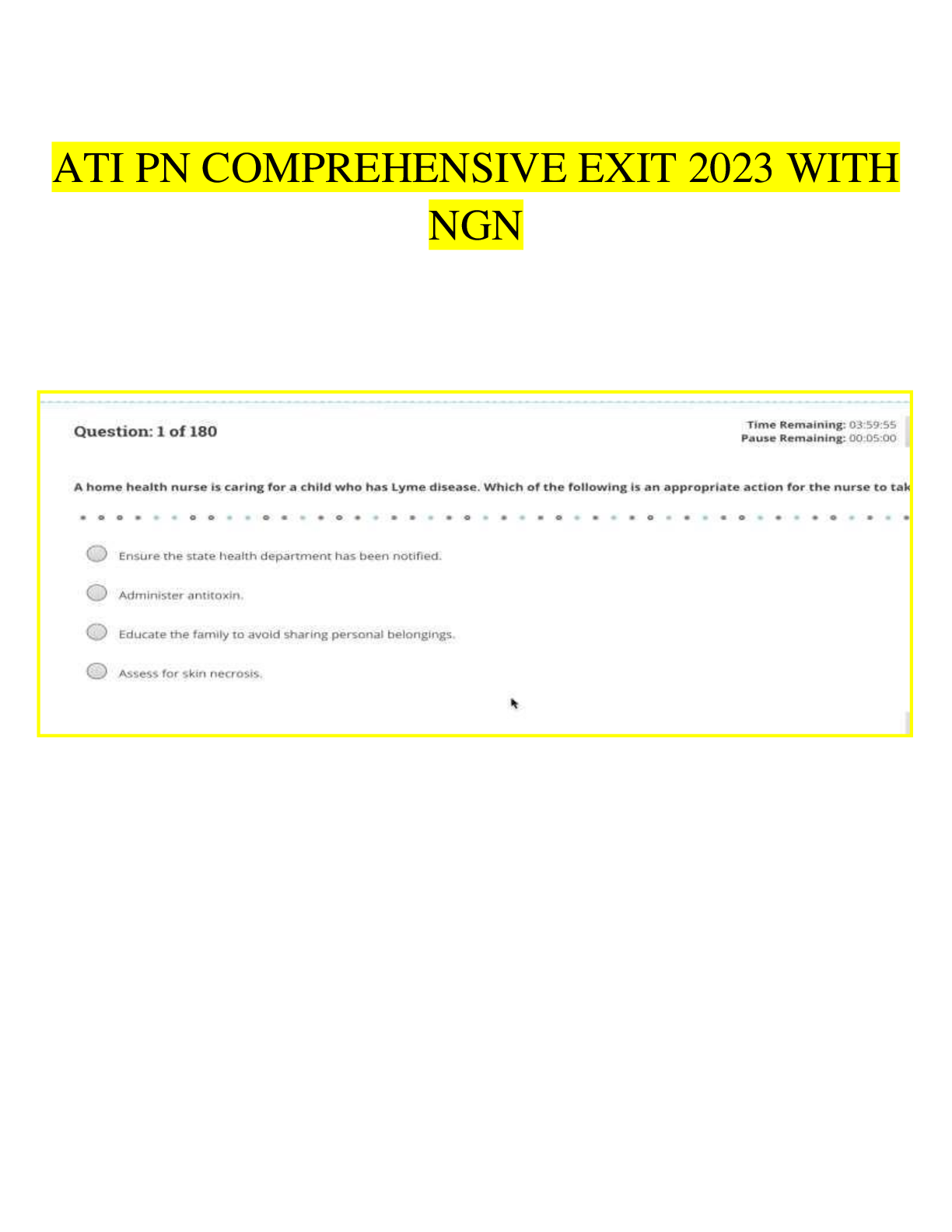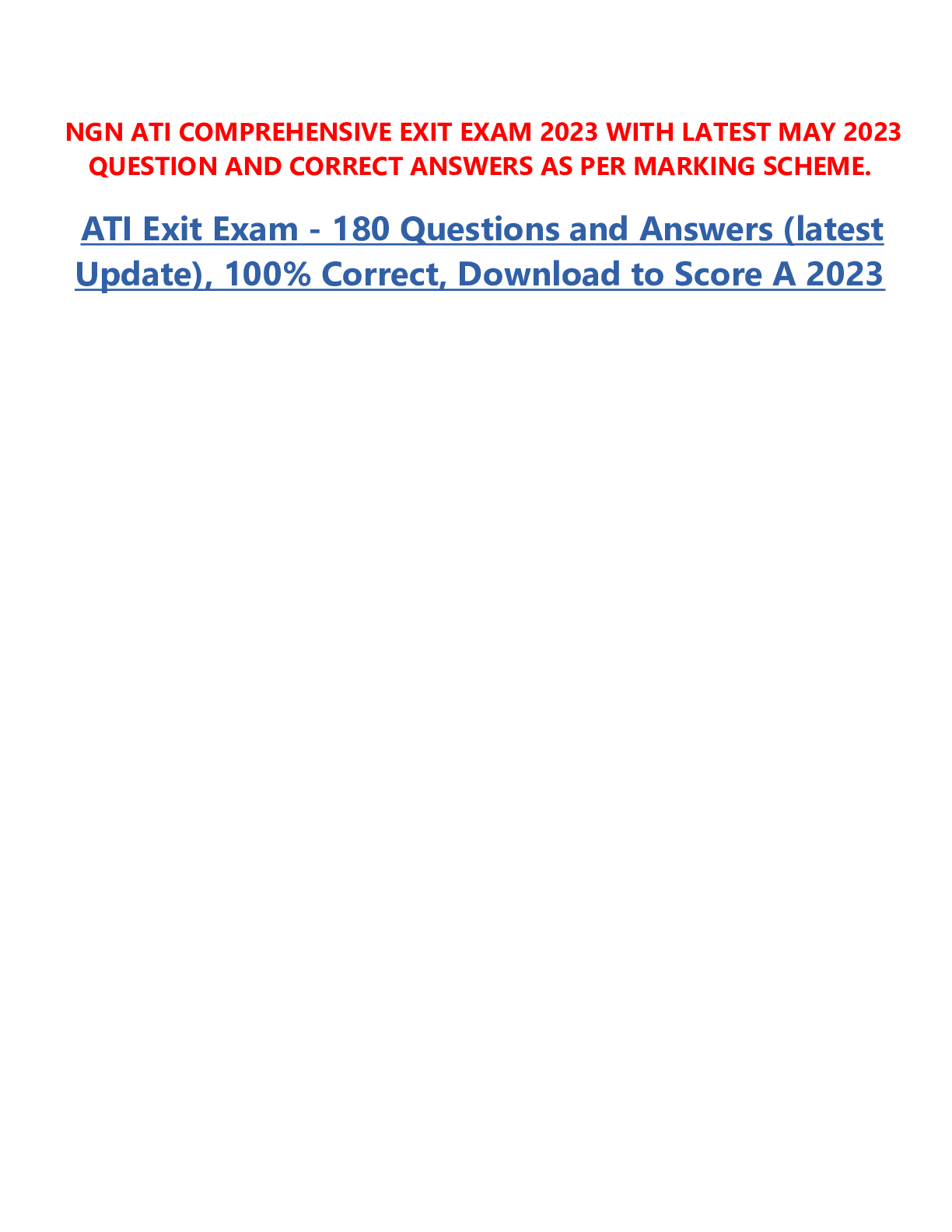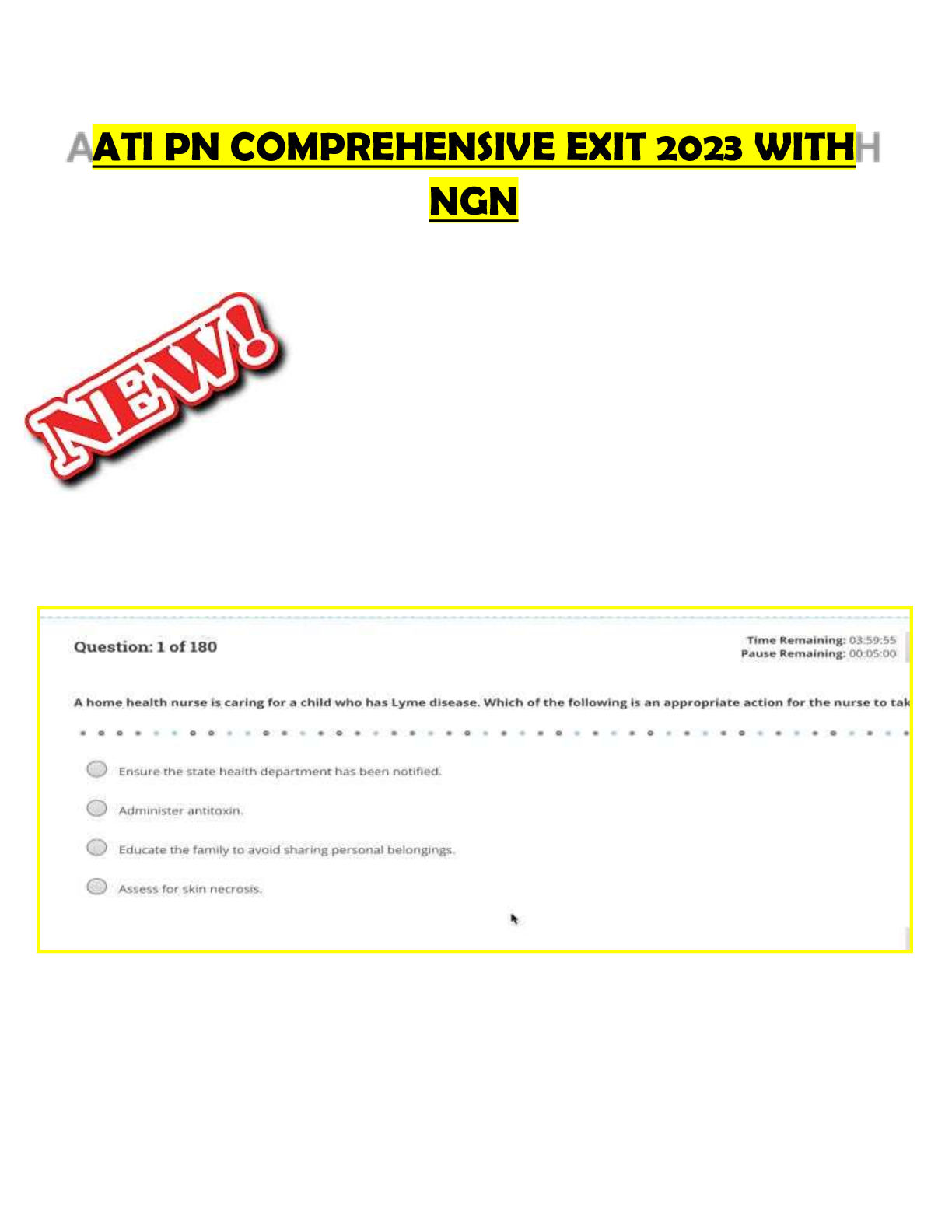*NURSING > ATI > MS Week 7 Practice Assessment ATI. Questions and answers. 99% proven pass rate. (All)
MS Week 7 Practice Assessment ATI. Questions and answers. 99% proven pass rate.
Document Content and Description Below
MS Week 7 Practice Assessment ATI. Questions and answers. 99% proven pass rate. During an admission interview, a client tells the nurse that he takes echinacea, but does not remember why his provi... der recommended it for him. The nurse should remind the client that this herbal supplement has which of the following actions? A) Treats osteoarthritis B) Promotes weight loss C) Enhances memory and cognition D) Stimulates the immune system - Ans-ANS: D) Stimulates the immune system RATIONALE: Echinacea supposedly reduces the manifestations and duration of colds and flu-like illnesses through short-term stimulation of the immune system. A nurse is caring for a client who has AIDS and anorexia. Which of the following actions should the nurse take to increase the client's body weight? A) Offer the client fluids with meals. B) Increase fiber in the client's diet. C) Encourage the client to eat less protein.D) Provide supplemental vitamins. - Ans-ANS: D) Provide supplemental vitamins. RATIONALE: The nurse should offer the client supplemental vitamins to improve the client's immune system and nutritional status. A nurse is caring for a client who has multiple myeloma and has a WBC count of 2,200/mm3. Which of the following food items brought by the family should the nurse prohibit from being given to the client? A) Baked chicken B) Bagels C) A factory-sealed box of chocolates D) Fresh fruit basket - Ans-ANS: D) Fresh fruit basket RATIONALE: The nurse should instruct the client's family that certain food products such as fresh fruit and vegetables should be excluded from the client's diet to reduce the risk of foodborne illness. An alternative to the fresh fruits would be a package of dried fruits. A nurse is reviewing the plan of care for a client who has cellulitis of the leg. Which of the following interventions should the nurse recommend? A) Apply topical antifungal agents. B) Apply fresh ice packs every 4 hr.C) Wash daily with an antibacterial soap. D) Keep draining lesions uncovered to air dry. - Ans-ANS: Wash daily with an antibacterial soap. RATIONALE: The nurse should plan to have the client wash the area daily with an antibacterial soap to promote tissue health and treat the infection. A nurse is removing an isolation gown that has waist ties in the front after caring for a client who requires contact precautions. Which of the following steps should the nurse take? A) Untie the neck ties, remove the gloves, and untie the front waist ties. B) Untie the front waist ties, remove the gloves, and untie the neck ties. C) Remove the gloves, perform hand hygiene, and untie the front waist ties. D) Remove the gloves, untie the neck ties, and untie the front waist ties. - Ans-ANS: B) Untie the front waist ties, remove the gloves, and untie the neck ties. RATIONALE: When removing an isolation gown that has ties in the front, the nurse should untie the waist ties first while still wearing gloves because the front ties are dirty while the back ties are clean. A nurse is reinforcing teaching with a client who has HIV and is being discharged to home. Which of the following instructions should the nurse include in the teaching?A) Take temperature once a day. B) Wash the armpits and genitals with a gentle cleanser daily. C) Change the litter boxes while wearing gloves. D) Wash dishes in warm water. - Ans-ANS: A) Take temperature once a day. RATIONALE: The nurse should reinforce to the client to take his temperature once a daily to identify if a temperature is present due to the client's altered immune system. A nurse is reviewing guidelines for prophylactic antibodies therapy. The nurse should identify that prophylactic antibiotic therapy is not recommended for which of the following clients? A) A client who has a fever of unknown origin B) A client who has a prosthetic heart valve and needs dental surgery C) A client prior to hip arthroplasty D) A client who had an emergency cesarean section - Ans-ANS: A) A client who has a fever of unknown origin RATIONALE: A fever of unknown origin is not an indication for prophylactic antibiotic therapy.A nurse in a provider's office is collecting data from a client who reports a red rash on her face, fever weight loss and joint pain. The nurse should plan to prepare the client for which of the following laboratory tests? A) Antinuclear antibody (ANA) titer B) B-type natriuretic peptide C) Western Block Analysis D) Plasma Adrenocorticotropic hormone (ACTH) - Ans-ANS: A) Antinuclear antibody (ANA) titer RATIONALE: This client has common manifestations seen with systemic lupus erythematosus (SLE). Typically the ANA titer is elevated in clients who have SLE. A nurse is caring for a client who has absolute neutrophil count (ANC) less than 1,000/mm3. Which of the following interventions should the nurse implement? A) Restrict all visitors. B) Increase the client's intake of raw produce. C) Report a temperature of 38.3° C (101° F) or greater. D) Insert an indwelling urinary catheter. - Ans-ANS: C) Report a temperature of 38.3° C (101° F) or greater.RATIONALE: An ANC of less than 2,000/mm3 indicates neutropenia. Neutropenia occurs in clients who are immunocompromised, are undergoing chemotherapy, or have a disorder that reduces the production of neutrophils. A client who has neutropenia is at an increased risk for infection. A major objective in caring clients who are neutropenic is protection from, and early recognition of, infection. A temperature greater than 37.8° C (100° F) is significant for a client who has neutropenia and indicates infection until proven otherwise. A nurse is reinforcing teaching with a newly licensed nurse about the purpose of an indirect Coombs test. Which of the following statements should the nurse include in the teaching? A) "This test determines if kernicterus will occur in the newborn." B) "This test detects Rh-negative antibodies in a newborn who is Rh-positive." C) "This test detects Rh-positive antibodies in the mother's blood." D) "This test determines the presence of maternal antibodies in the newborn's blood." - Ans-ANS: C) "This test detects Rh-positive antibodies in the mother's blood." RATIONALE: An indirect Coombs test is performed on the mother's blood to determine if she has developed antibodies to the Rh antigen. A nurse is caring for a group of clients. For which of the following tasks should the nurse plan to wear protective eye equipment? (Select all that apply.) A) Giving personal care to an infant who is HIV-positiveB) Providing a newborn's first bath C) Withdrawing cord blood from a neonate D) Transporting a cerebral spinal fluid specimen to the laboratory E) Suctioning secretions from a child's newly placed tracheostomy tube - Ans-ANS: C and D RATIONALE: Giving personal care to an infant who is HIV-positive is incorrect. The nurse should wear protective eye equipment whenever it is possible for blood or body fluids to splatter onto the nurse's face. This is not likely during routine personal care. Providing a newborn's first bath is incorrect. The nurse should wear protective eye equipment whenever it is possible for blood or body fluids to splatter onto the nurse's face. This is not likely while bathing a newborn. Withdrawing cord blood from a neonate is correct. The nurse should wear protective eyewear when withdrawing umbilical cord blood, because the blood could splash into the nurse's eyes. Transporting a cerebral spinal fluid specimen to the laboratory is incorrect. The nurse should wear protective eye equipment whenever it is possible for blood or body fluids to splatter onto the nurse's face. This is not likely while transporting a specimen to the laboratory. Suctioning secretions from a child's newly placed tracheostomy tube is correct. The nurse should wear protective eyewear when performing tracheal suctioning because she is at risk for the client's secretions splashing into her eyes. A nurse is reviewing a client's admission laboratory values. The client's has thrombocytopenia with a platelet count of 34,000/mm3. Which of the following actions should the nurse take? A) Apply pressure for 3 to 10 min following venipunctures. B) Have the client perform the Valsalva when toileting.C) Secure a warm cloth over ecchymosis for 25 to 30 min following injury. D) Check for the presence of WBCs in the urine. - Ans-ANS: A) Apply pressure for 3 to 10 min following venipunctures. RATIONALE: Thrombocytopenia places the client at high risk for spontaneous or uncontrolled bleeding. Therefore, the nurse should plan to hold pressure to venipuncture sites for 3 to 10 min, or 15 to 20 min following an arterial stick. A nurse is caring for a group of clients. F [Show More]
Last updated: 1 year ago
Preview 1 out of 29 pages
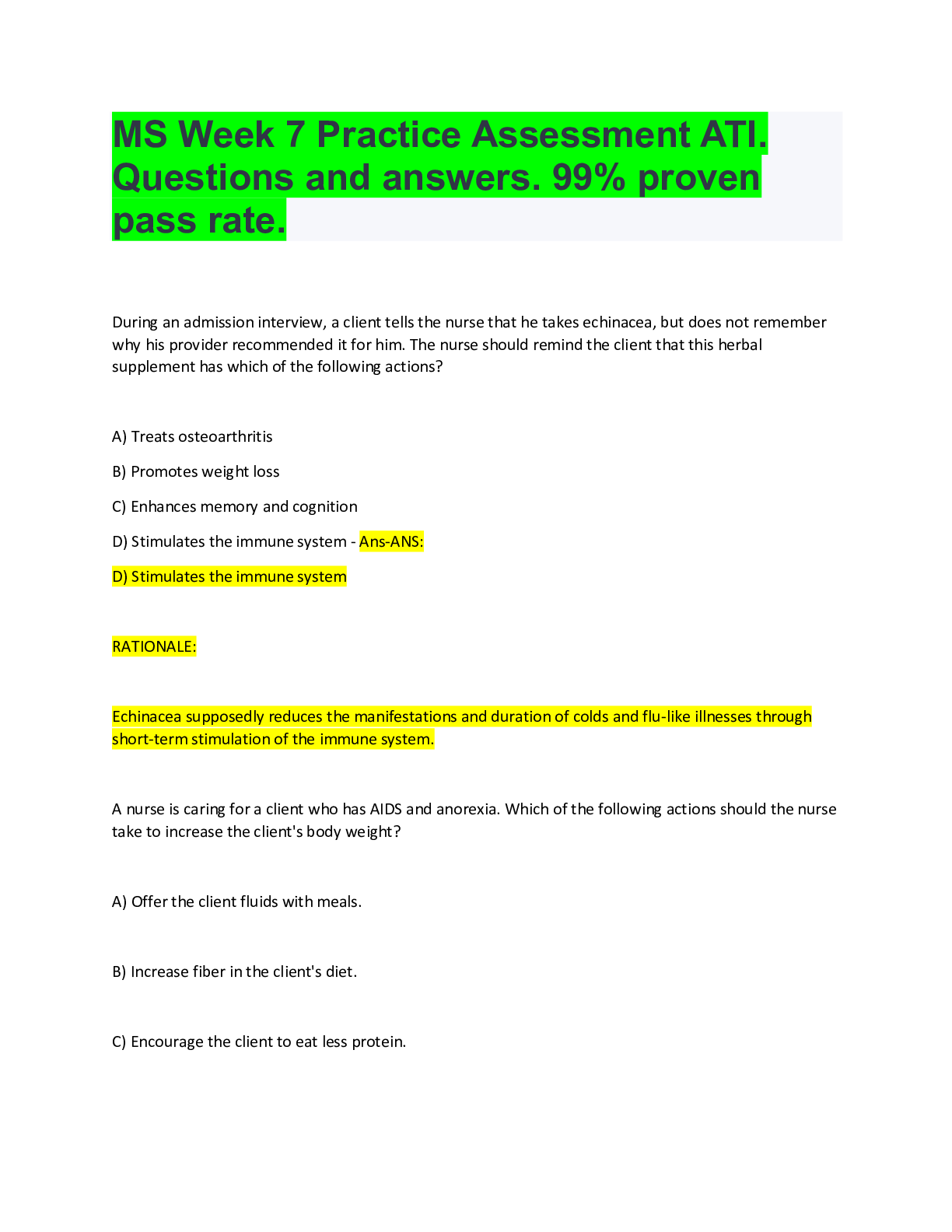
Reviews( 0 )
Document information
Connected school, study & course
About the document
Uploaded On
Jul 02, 2022
Number of pages
29
Written in
Additional information
This document has been written for:
Uploaded
Jul 02, 2022
Downloads
0
Views
73

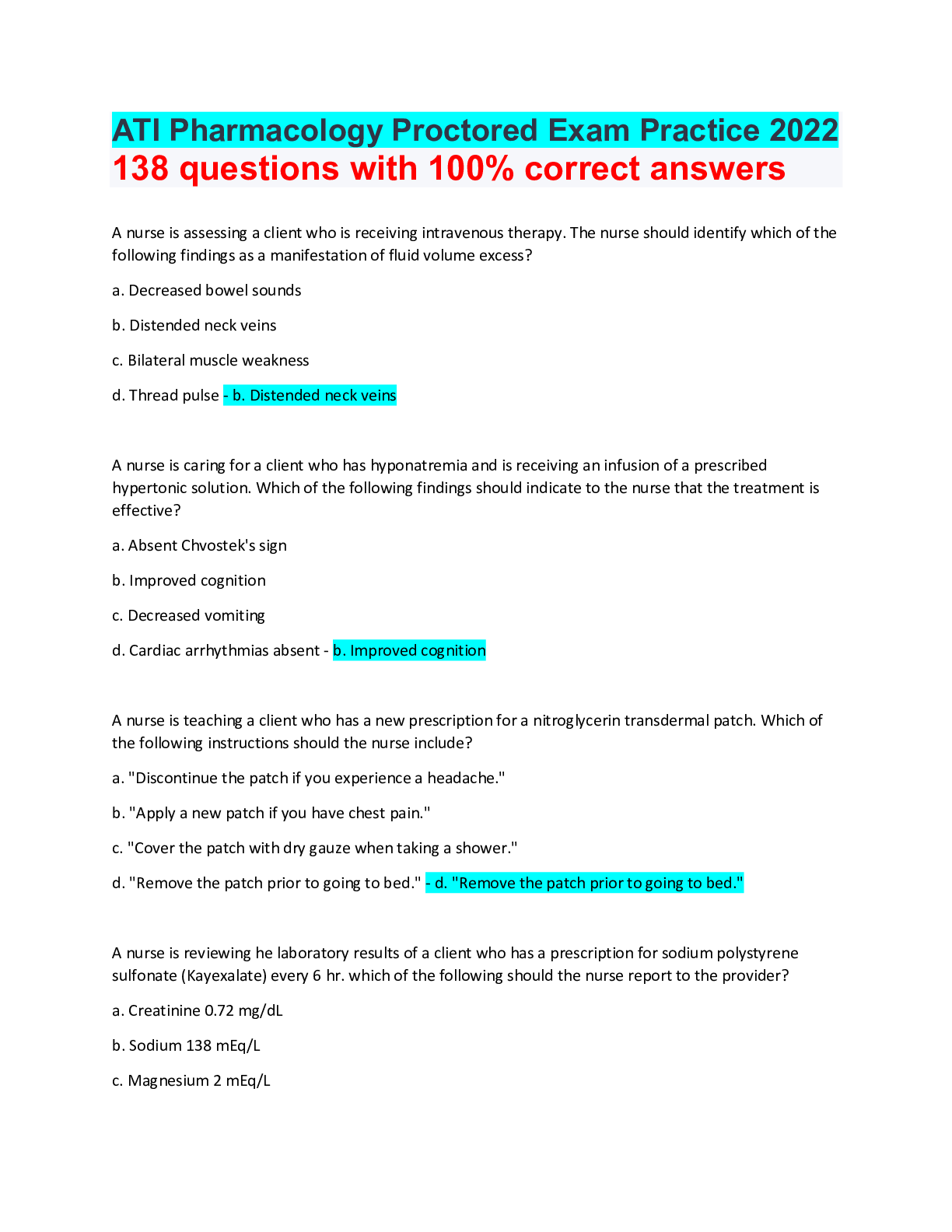
_Already Graded A.png)
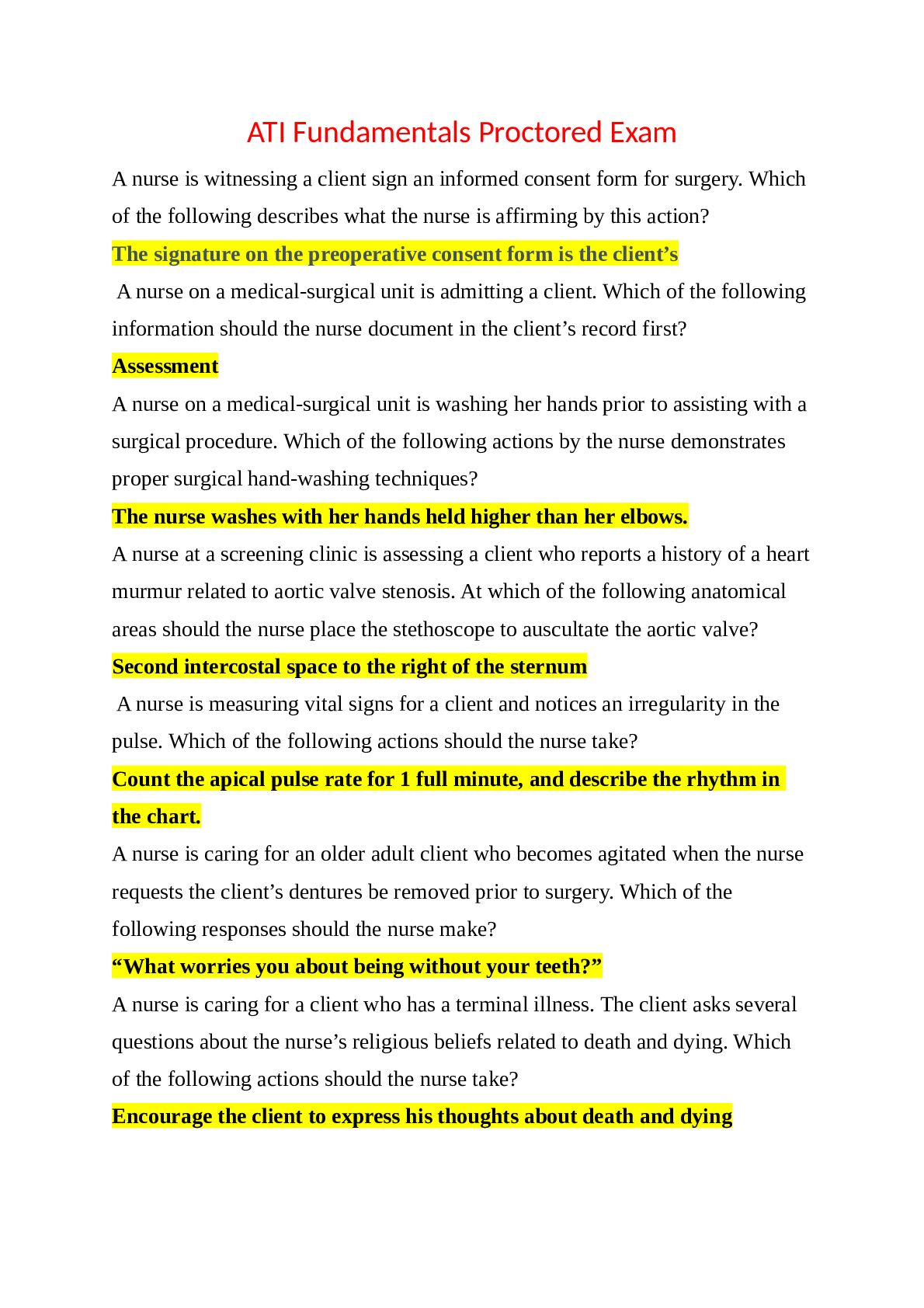
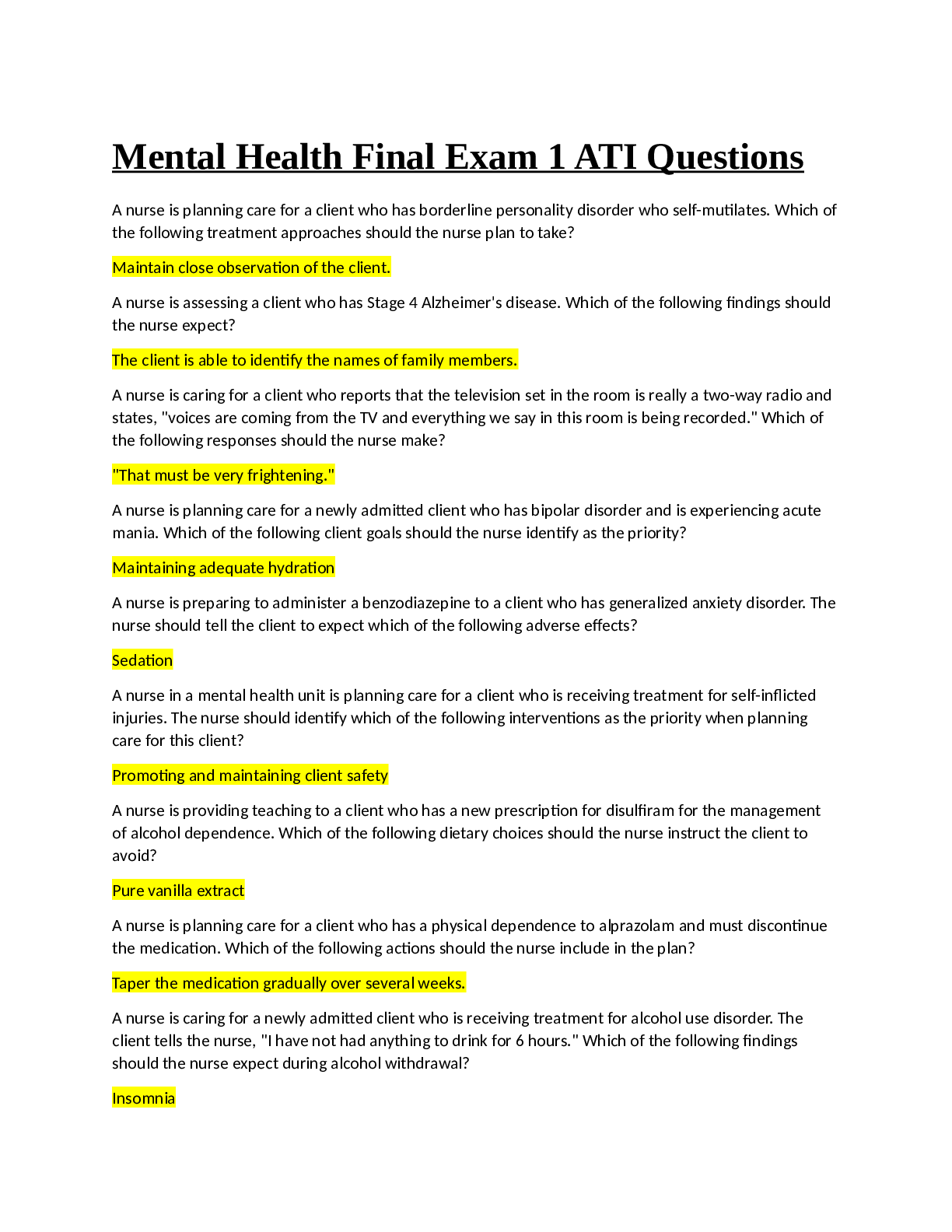
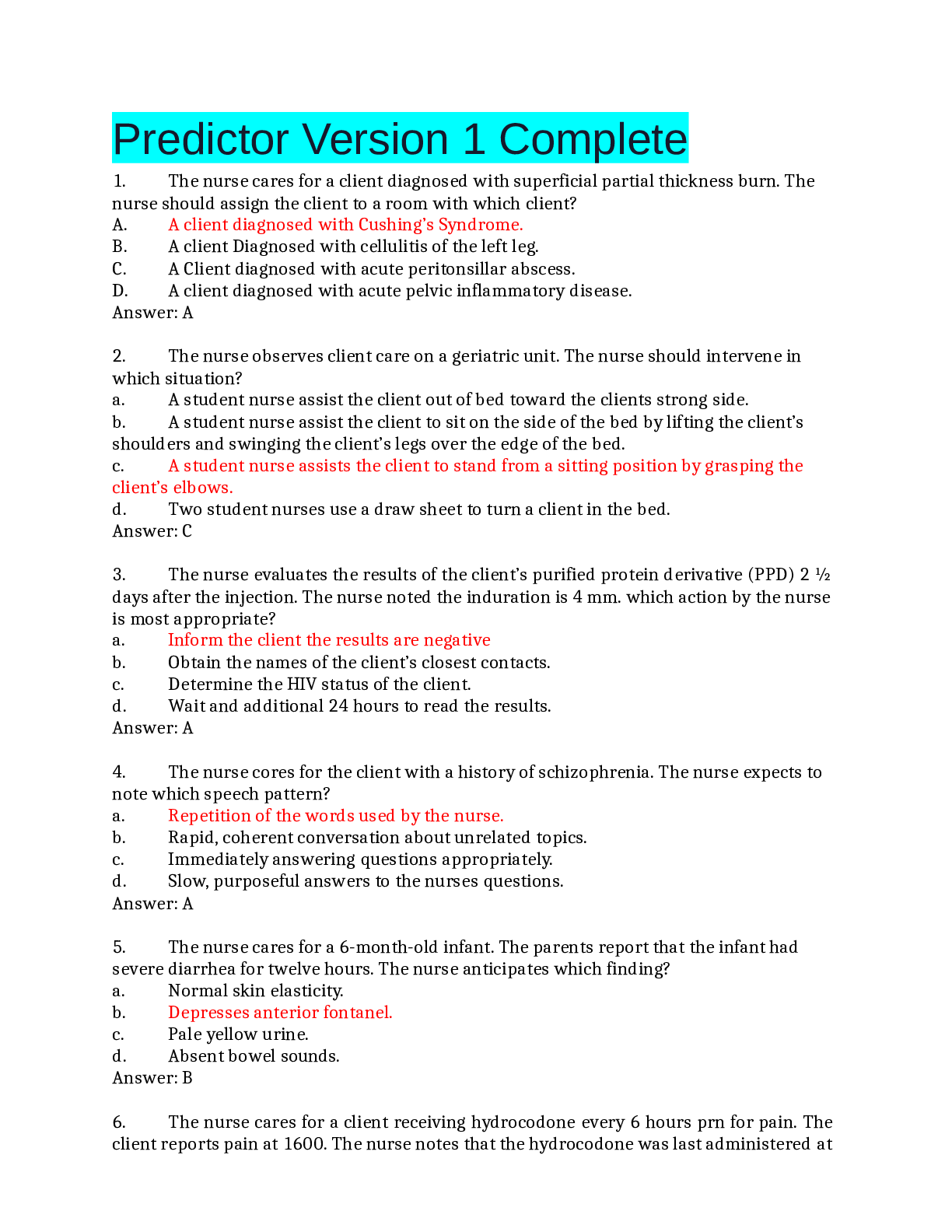
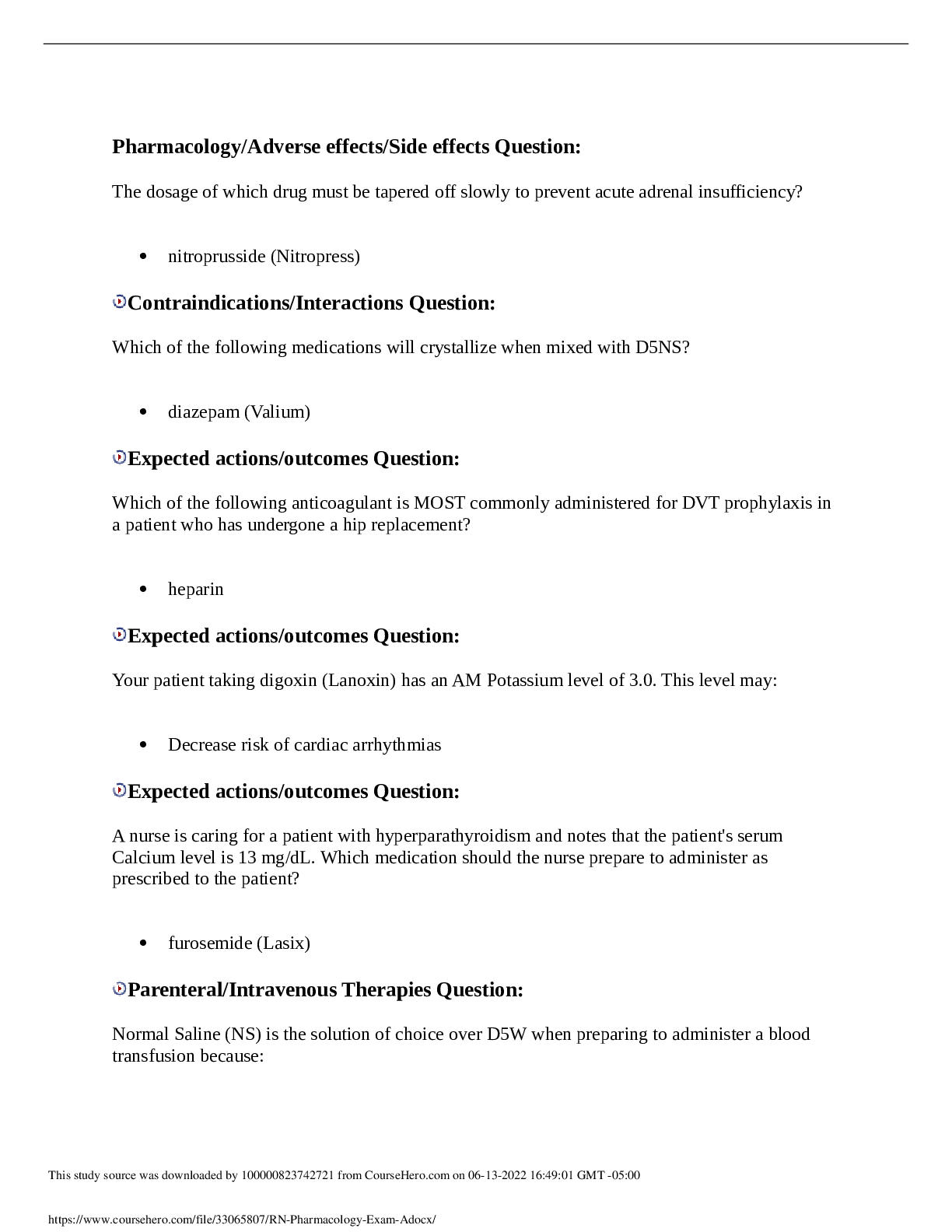
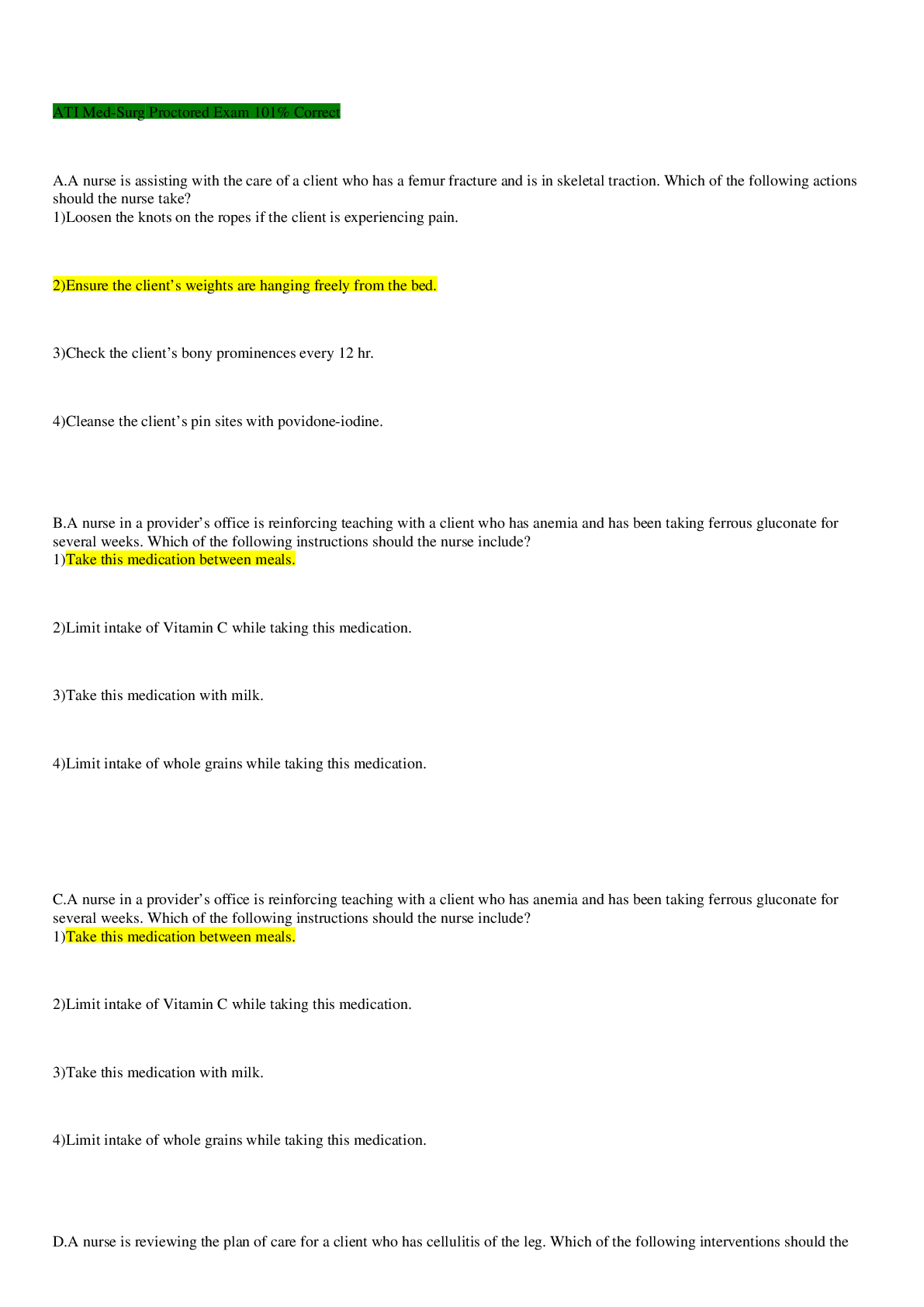
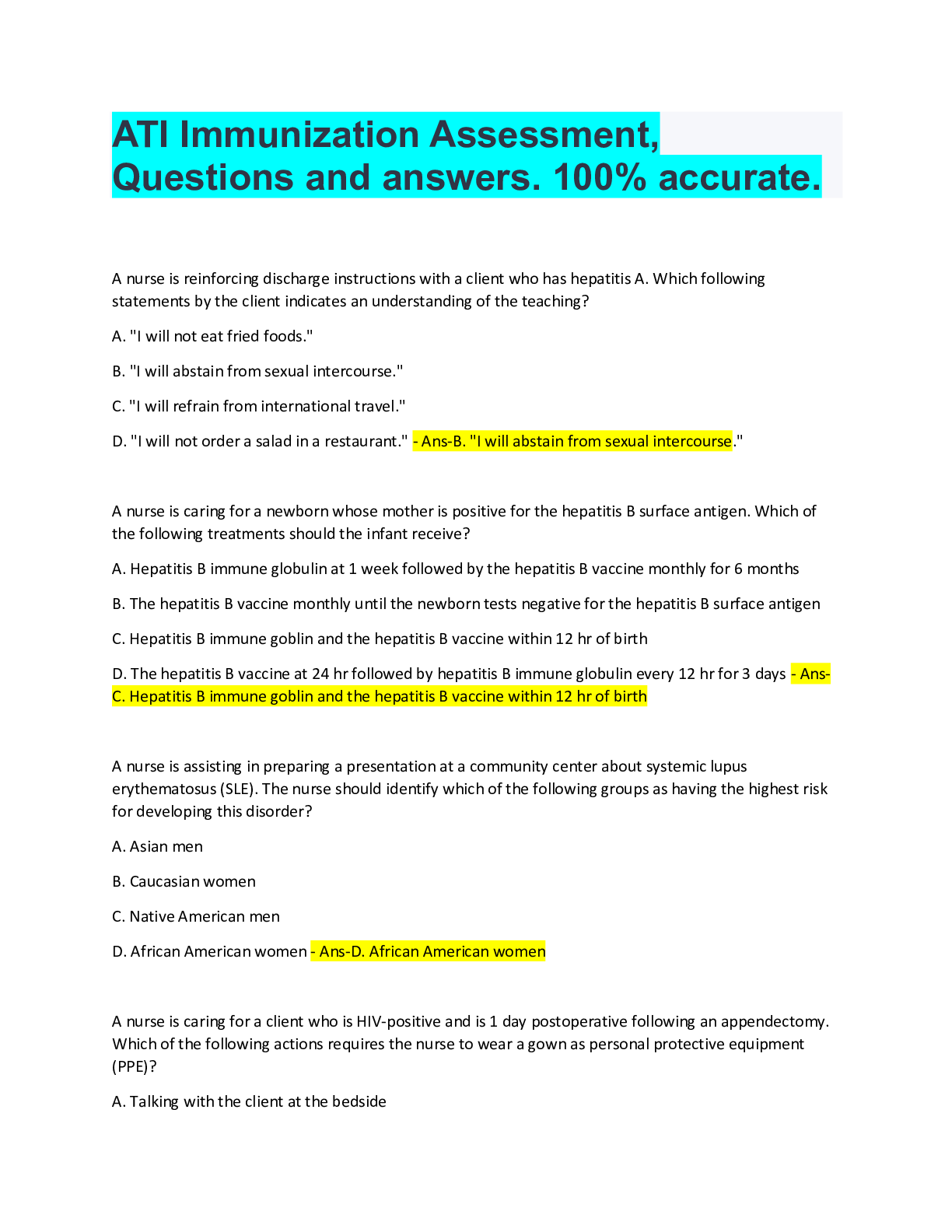
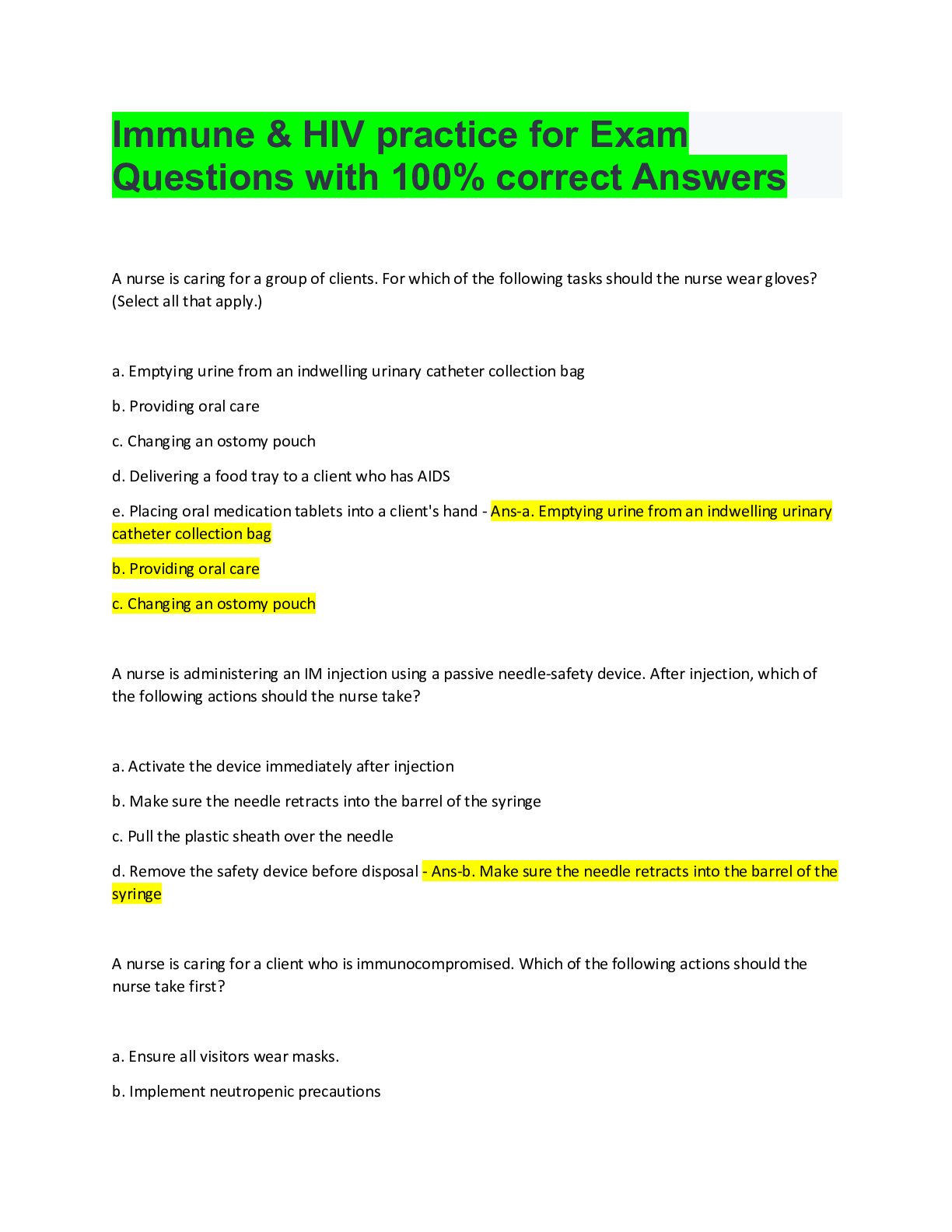
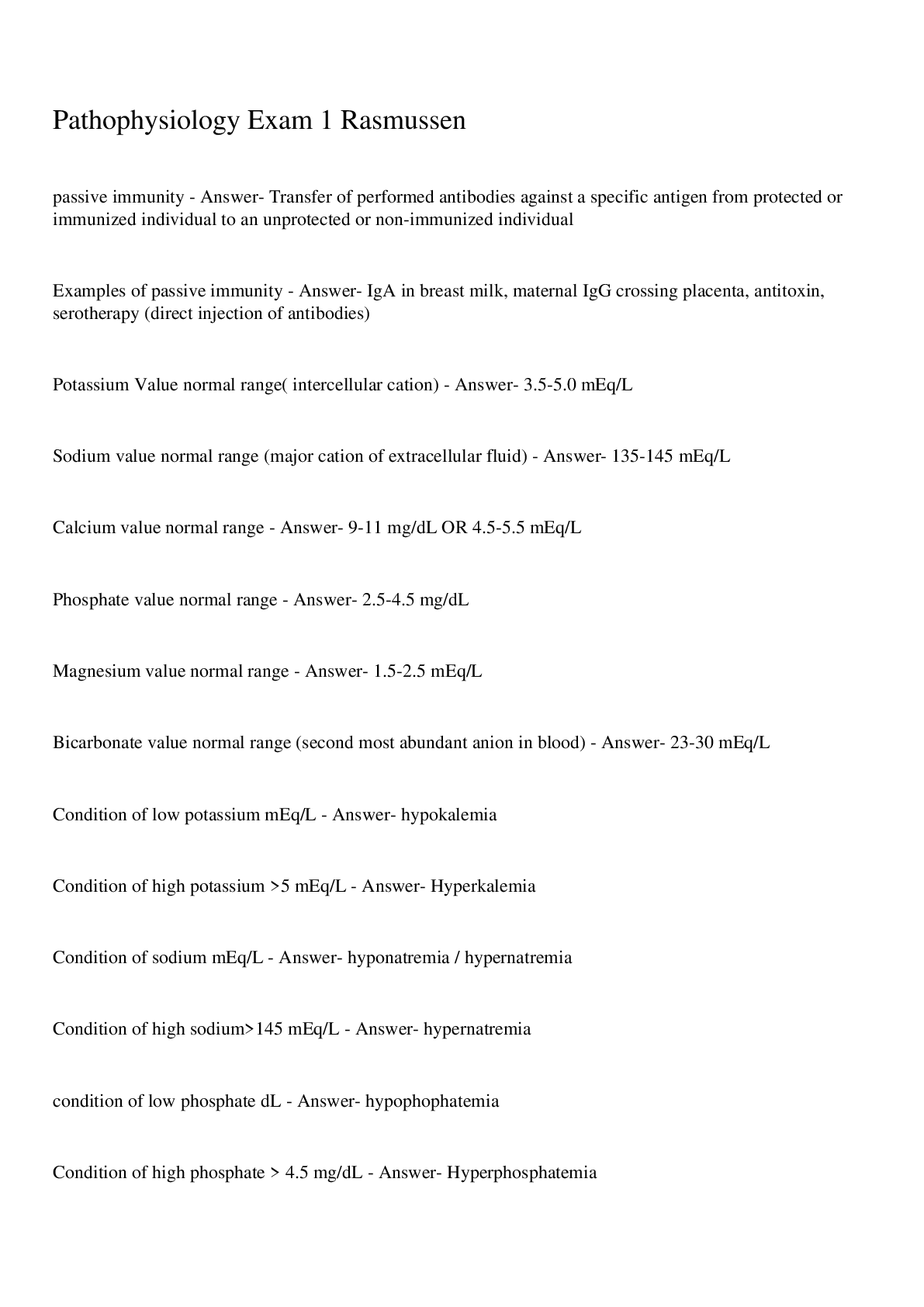
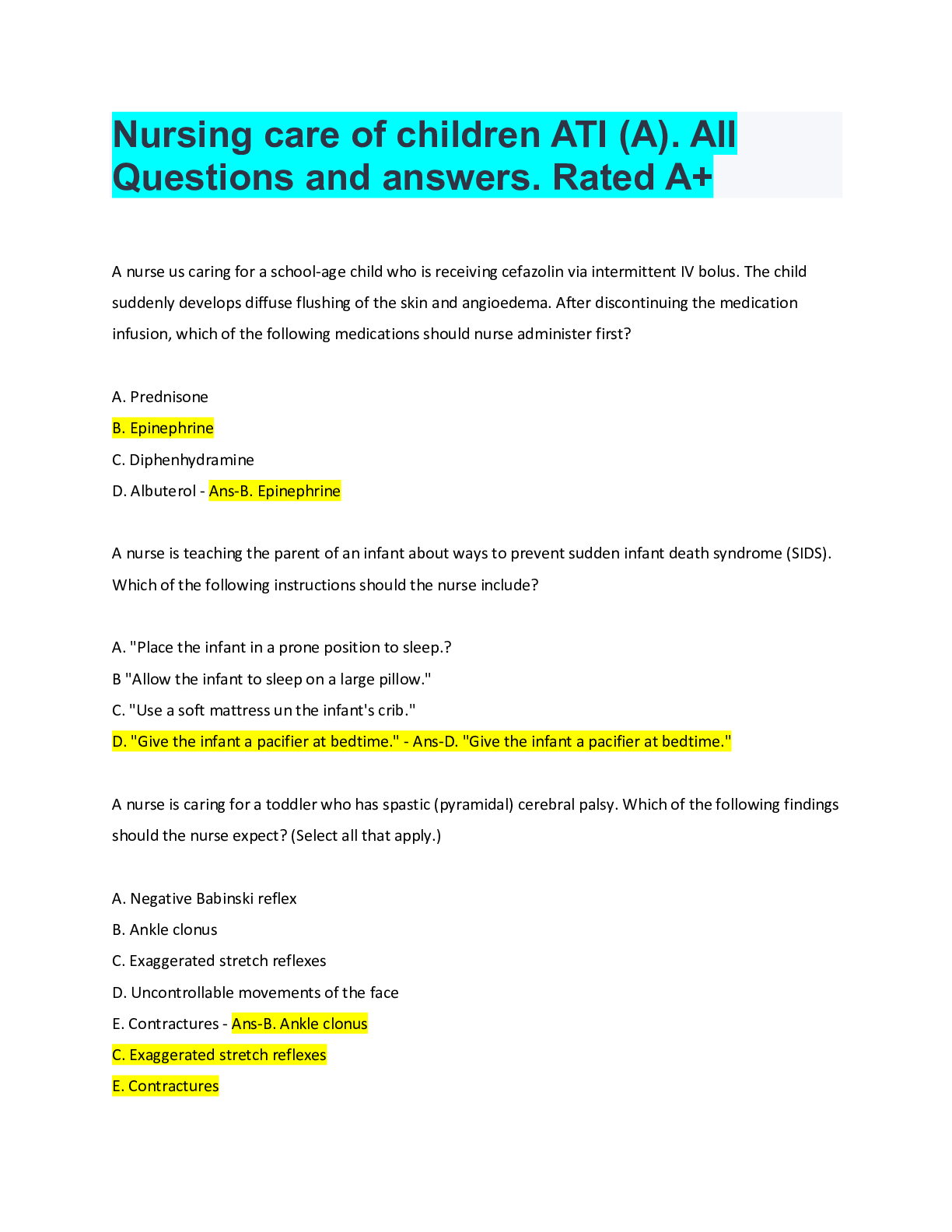
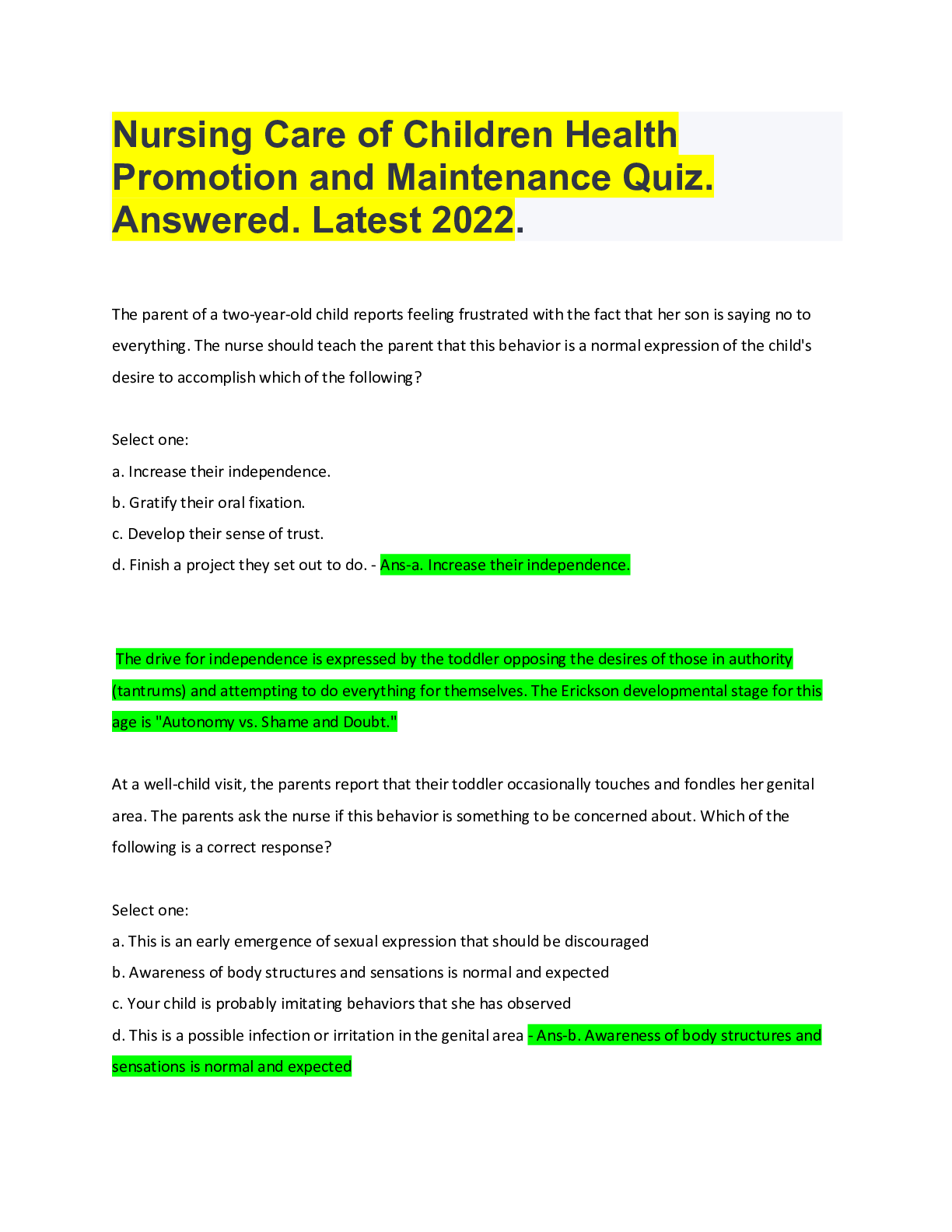
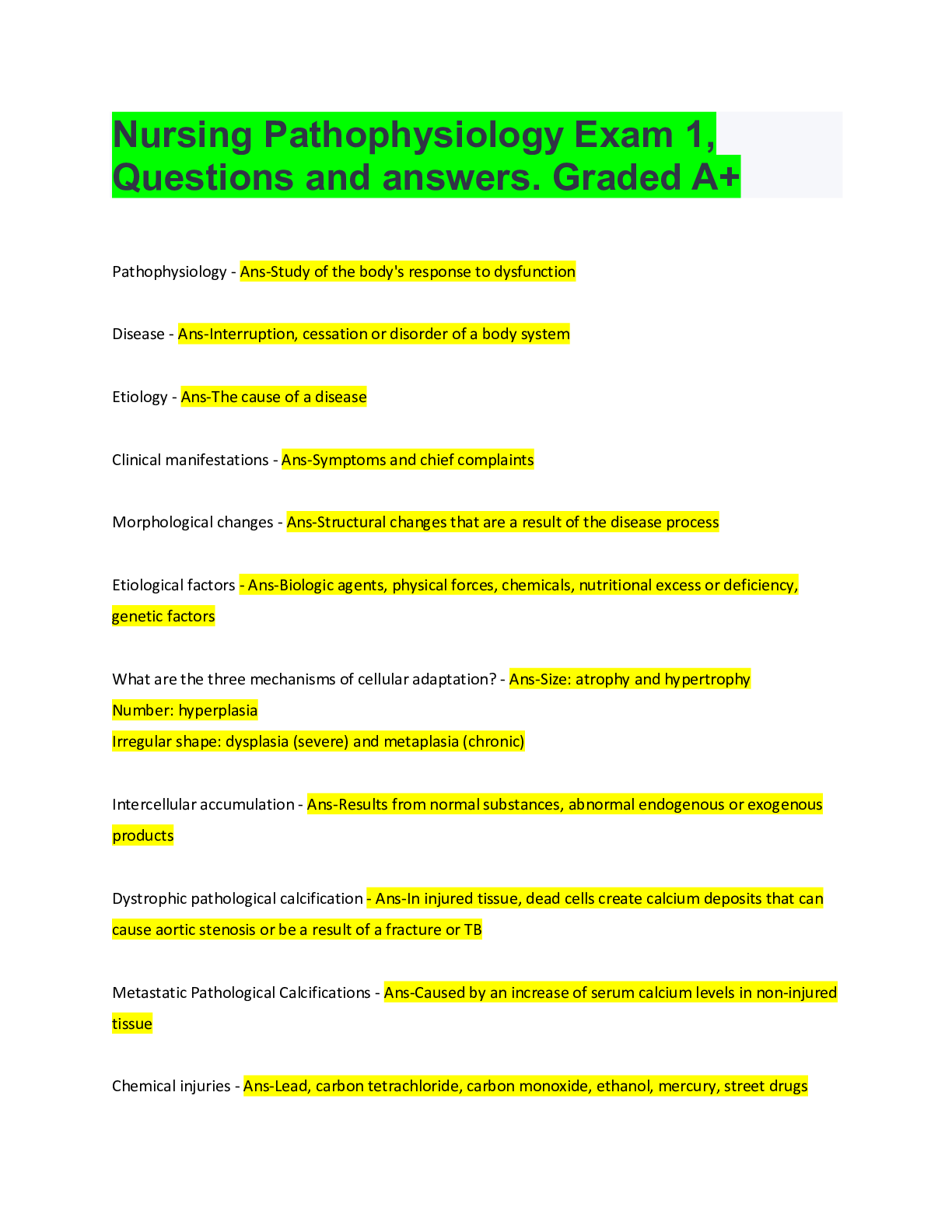
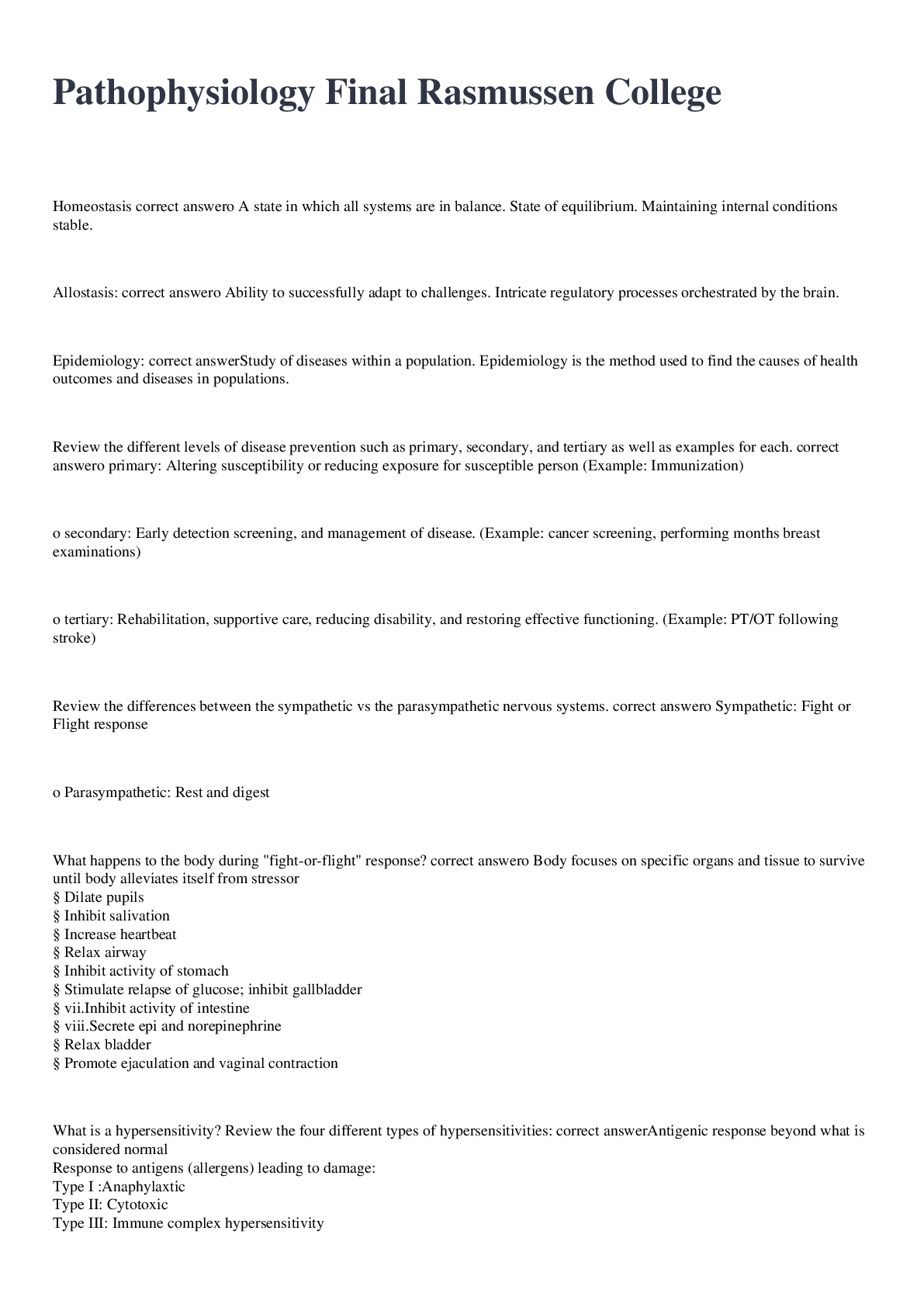
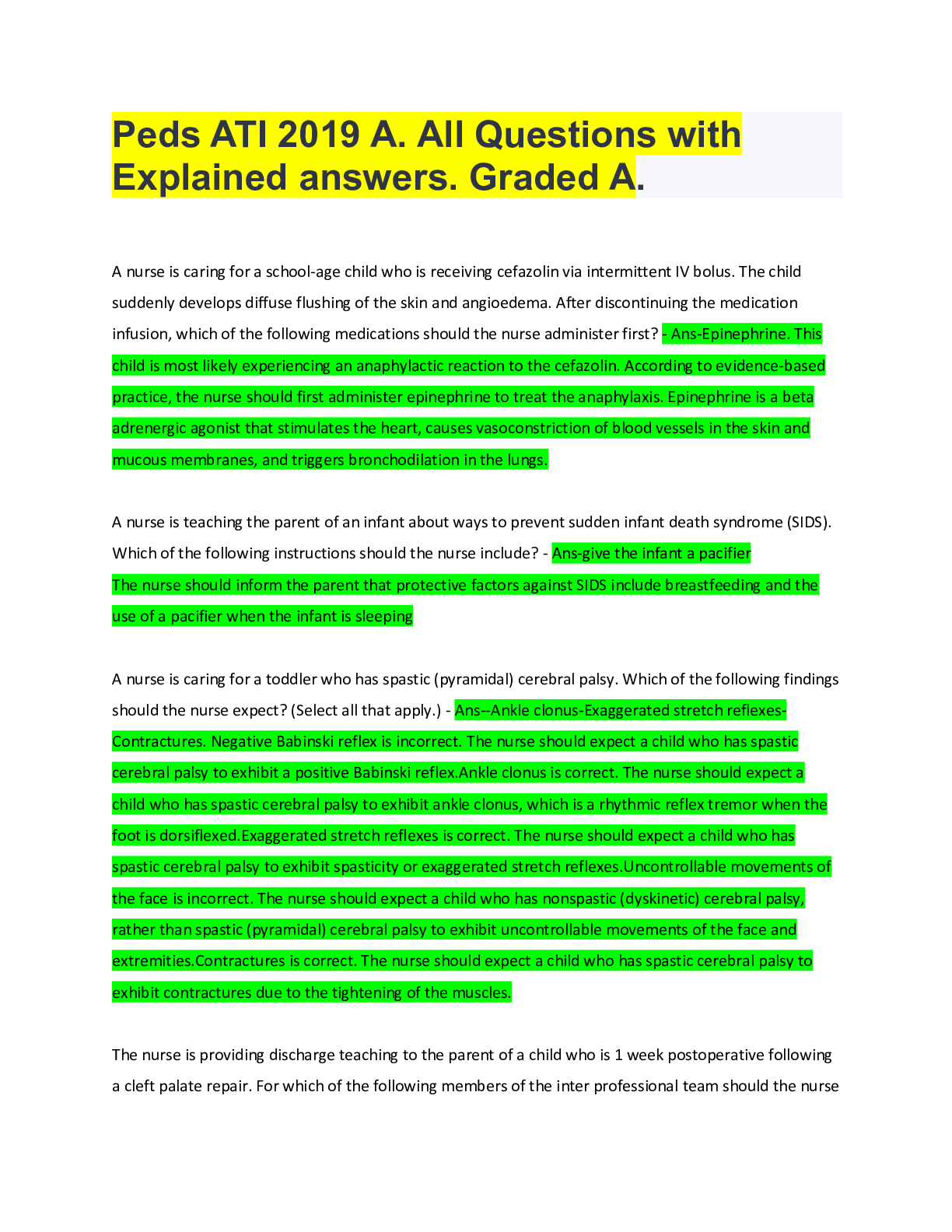
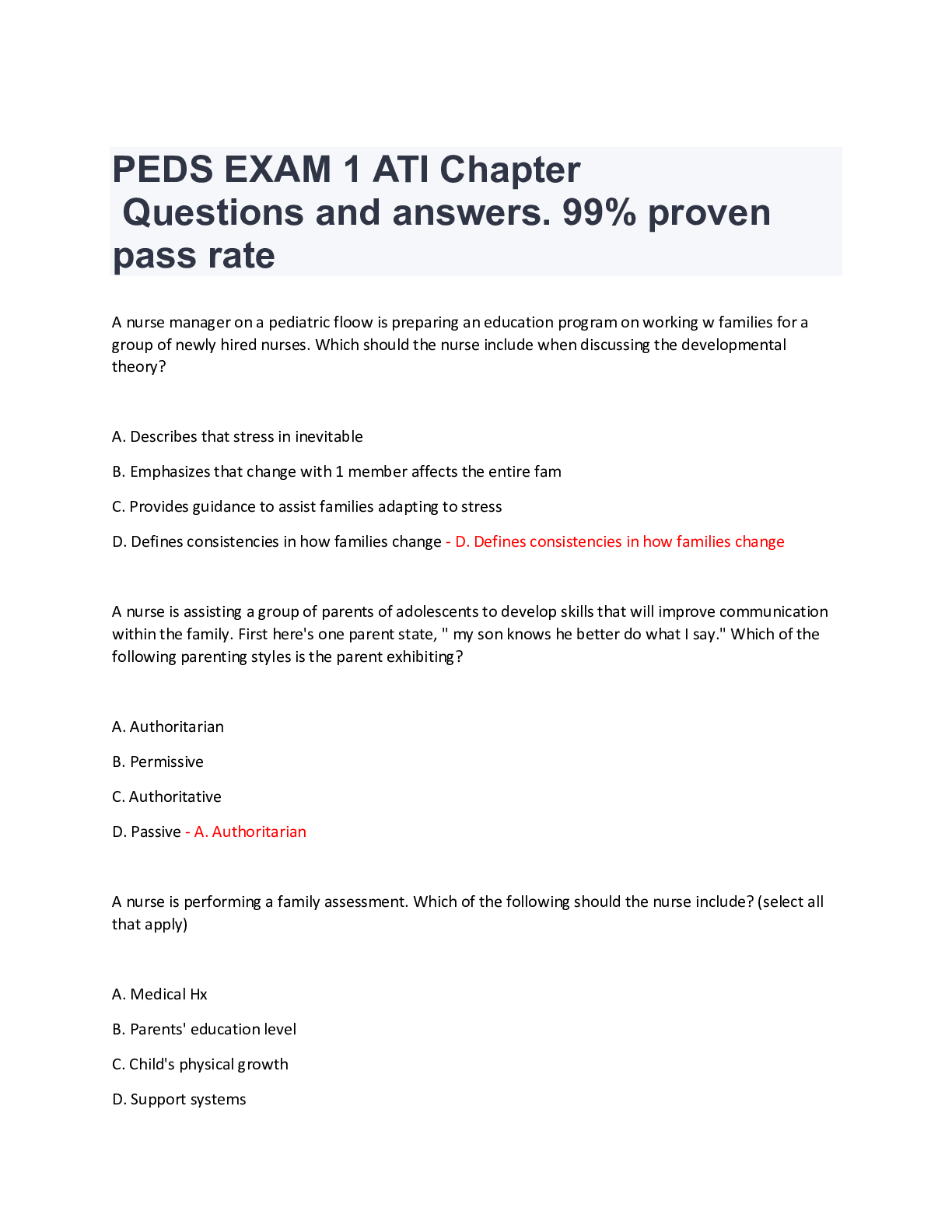
.png)

